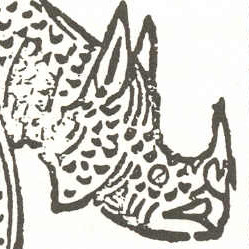If you’ve see the film Avatar, you might remember that the forest is a living being, with the plants able to communicate with one another. It’s not just a sci-fi fantasy, though. Researchers found that the trees in a forest in Canada really do cooperate and communicate. They share resources and look out for one another. It’s likely that it happens everywhere, and it’s been called the worldwide wood.
The trees communicate though an underground network of fungus means of communication is fungus. Fungi are neither plants nor animals – they are most familiar as the mushrooms we eat and the toadstools we find growing outside or in dark, damp places.

Mycorrhizal fungus lives among the roots of plants and trees, spreading long threads between them and forming a huge underground network. The fungus and the trees live happily together. A tree makes food (by photosynthesising, and so making sugars), which it shares with the fungus. The fungus absorbs water and nutrients from the soil, some of which it passes to the tree. It’s a good partnership.
What has surprised researchers, though, is that the fungus can move chemicals from one tree to another, acting rather like a courier service. The trees don’t even have to be the same type. Taller birch trees help young fir trees in the summer when the young trees are overshadowed and don’t get enough sunlight. In the winter, the young fir trees take their turn to help the birch trees, which have lost their leaves and can’t photosynthesise (use sunlight to make their food). It’s an astonishing discovery, as plants and animals often compete with each other for resources such as food and living space.

But it goes even further. If one tree is dying it sends its useful supplies to other trees. In an experiment, researchers put two different types of pine trees in a pot, sharing root fungi. Then they pulled the needles off one tree – I know, brutal to torture young trees in this way. The assaulted tree moved a lot of its valuable chemical stock to its roots and to the healthy tree through the fungus-network. It also sent chemicals that trees produce when stressed, which acted as a warning to the other tree. The other tree increased its own level of defensive chemicals. (Many plants can change their chemical content to repel attack, maybe smelling or tasting horrible to deter insects or browsers.)

It’s not just trees that do this. Grass and other non-woody plants also communicate underground, sending chemical signals and food when they are attacked by something eating them – or even a lawnmower trimming them.
No one knows quite why this happens. Are plants deliberately helping each other to keep the entire forest healthy? Or are they storing chemicals in their roots which the fungi are moving – stealing it to give to other trees?
Whatever the reason, the result is that the forest does work as though it had a single ‘mind’. Avatar was not so far-fetched after all.
You can read more about research into networks of forest fungus here.
(Main image: Donar Reiskoffer, Wikimedia Commons, CC3 licence.)
